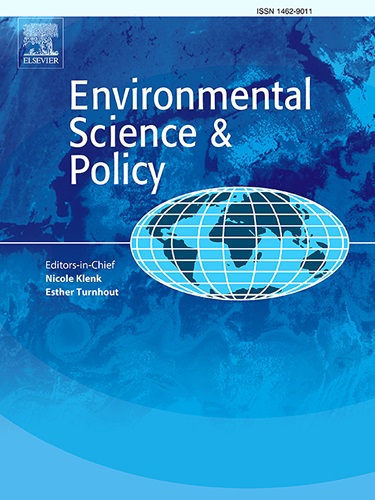从气候-生物多样性-健康的角度审视当地粮食系统规划的系统思考方法:科莫克斯谷案例研究
IF 4.9
2区 环境科学与生态学
Q1 ENVIRONMENTAL SCIENCES
引用次数: 0
摘要
粮食系统极易受到人为气候变化和环境退化的影响。与此同时,粮食系统极大地促进了对生态系统产生负面影响的温室气体的产生。这种因果关系的恶性循环要求向可持续粮食系统过渡,最好通过综合规划和政策观点来实现,解决相互关联的社会经济和环境问题和目标。本研究应用系统思维来绘制粮食系统规划和其他可持续性优先事项之间的关系,即与气候、生物多样性和健康有关的优先事项。该研究与不列颠哥伦比亚省科莫克斯谷地区的利益相关者合作,开发了一个因果循环图,随后使用Girvan-Newman社区检测算法对其进行分析,以确定紧密相连的节点或“集群”。这项工作的结果提供了对当地粮食系统的挑战和机遇如何与其他地方和区域可持续发展目标联系和整合的全面理解。该研究确定了123个系统节点,分为五类:食品、气候、生物多样性、健康和治理。采用社区检测方法,在这些节点中发现了15个聚类。本研究中采用的方法,整合了因果循环图的发展和应用社区检测,是新颖的,并有助于越来越多的文献倡导综合规划方法来解决当地和区域粮食系统面临的复杂挑战。本文章由计算机程序翻译,如有差异,请以英文原文为准。
A systems thinking approach to examine local food systems planning through a climate-biodiversity-health lens: A Comox Valley case study
Food systems are highly vulnerable to the effects of anthropogenic climate change and environmental degradation. At the same time, food systems contribute significantly to the production of greenhouse gases that negatively impact ecosystems. Such a vicious cycle of cause and effect demands a transition to sustainable food systems, and this is best done through integrated planning and policy perspectives that tackle interconnected socioeconomic and environmental concerns and goals. This research applies systems thinking to map relationships among food systems planning and other sustainability priorities, namely those related to climate, biodiversity, and health. The study engaged stakeholders in the Comox Valley region, British Columbia, to develop a causal loop diagram, which was subsequently analyzed using the Girvan-Newman community detection algorithm to identify closely connected nodes or 'clusters'. The results of this work provide a comprehensive understanding of how local food systems' challenges and opportunities connect and integrate with other local and regional sustainability objectives. The research identified 123 systems nodes, which were organized into five categories: food, climate, biodiversity, health, and governance. The community detection method was applied to reveal 15 clusters among these nodes. The methodology employed in this research, integrating the development of a causal loop diagram and applying community detection, is novel and contributes to the growing body of literature advocating for an integrated planning approach to address the complex challenges facing local and regional food systems.
求助全文
通过发布文献求助,成功后即可免费获取论文全文。
去求助
来源期刊

Environmental Science & Policy
环境科学-环境科学
CiteScore
10.90
自引率
8.30%
发文量
332
审稿时长
68 days
期刊介绍:
Environmental Science & Policy promotes communication among government, business and industry, academia, and non-governmental organisations who are instrumental in the solution of environmental problems. It also seeks to advance interdisciplinary research of policy relevance on environmental issues such as climate change, biodiversity, environmental pollution and wastes, renewable and non-renewable natural resources, sustainability, and the interactions among these issues. The journal emphasises the linkages between these environmental issues and social and economic issues such as production, transport, consumption, growth, demographic changes, well-being, and health. However, the subject coverage will not be restricted to these issues and the introduction of new dimensions will be encouraged.
 求助内容:
求助内容: 应助结果提醒方式:
应助结果提醒方式:


